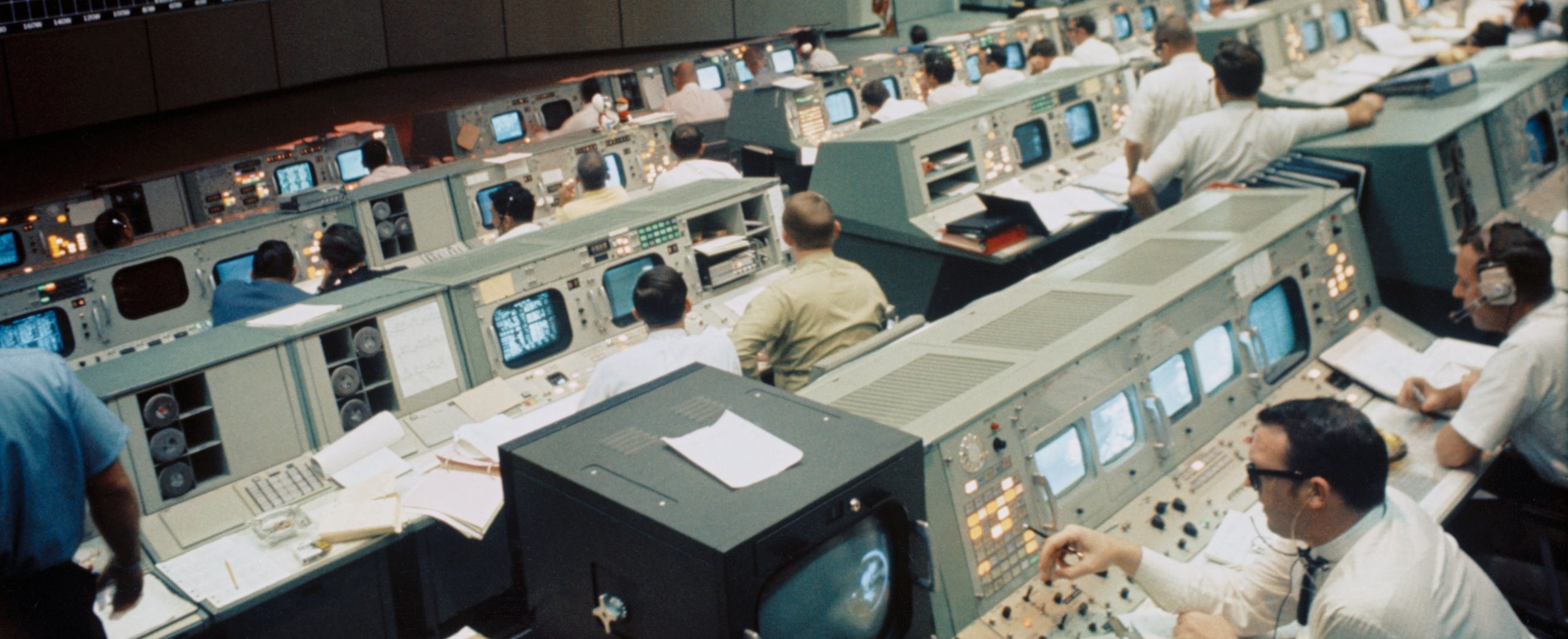This article was originally published in SAIL magazine (JAN 17, 2020) in a smaller version. This is the full version.
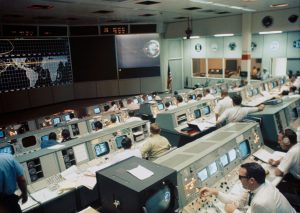
There has been a lot said about preparing your vessel for an offshore passage, everything from how to prepare your boat to feeding and caring for crew. Much of this information is important to the success of an offshore voyage, however there is an often an over looked part of the preparation. Few think about the importance of having good shore side support set up before heading out to sea. Shore side support is rarely if ever mentioned when talking about getting ready for an offshore passage, but is often as important as, if not more important than many other preparations. Almost all offshore racing teams have sophisticated onshore support teams providing them with weather routing, sea conditions, and critical equipment data to keep the boat running smoothly. Few cruisers have the same resources available but there is much they can do to get shore support with a bit of pre-planning and the right communication equipment.
When venturing offshore a land based support team can be invaluable for supplying weather information, assisting with repairs by providing technical data, relaying progress information to loved ones, and helping relay information in the event of a an emergency. Although most offshore racing boats have a whole team of professionals at the ready to assist as needed, few cruising sailors could afford such a professional “mission control.” The average cruising sailor is left with the help family and friends can provide.
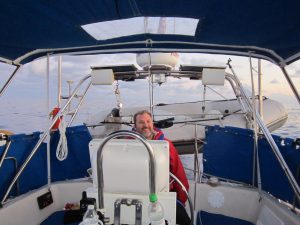
No matter how well meaning, the folks left back at the dock most likely will not have all the knowledge and experience needed to help when needed. Weather forecasting and how to handle an emergency can be more than the average landlubber can handle. Even if your shore support is an experienced boater they are likely not to have all the expertise that may be needed. Additionally, should a real emergency arise many may not react well due to the emotional worry they may have. This is why it is so important that before heading out to sea those left at home have a comprehensive list of contacts and emergency numbers should things get beyond their own knowledge.
The first thing to do when thinking about shore side support is to pick a lead person or your main contact. This should be someone who has the free time to gather all the routine information needed and has the ability to get that information to you when needed. Often this will be a close family member or friend because, let’s face it they will be the ones who care most about you and are willing to take the time needed. But keep in mind whoever you select needs to be able to keep calm and organized in an emergency. They also will need the free time to assist when needed. Additionally they will need to be trained in any communication methods that will be employed.
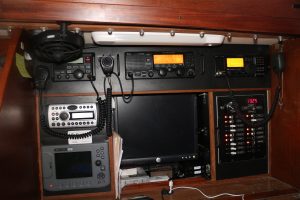
Along with the lead person it is important to find a backup if for some reason your primary contact is unable to help. This person should have all the skills your lead person has. Once the lead contacts are selected it will be useful to provide a list of emergency contacts and a list of some specialized contacts. People who may have weather, medical and mechanical skills and would be willing to help in an emergency. You may want to use paid services or individuals for this specialized support help.
Once your support team is selected you will need have a full contact list for all persons onboard. For a married couples sailing together make sure the information includes both families. When taking crew, particularly temporary crew, you want to make sure you have all their contact and emergency contact information as well. Verify that they have also have forwarded your information to their loved ones as well. This way in the event of a crew’s family having an emergency their family knows how to contact them through your contact person and vice versa.
Next have a good description of your vessel along with documentation numbers and registration numbers. This should include any dinghies or tenders as well. Vessel size and type should be noted along with hull, deck and canvas colors. Note the number of masts and any other distinguishing features such as wind generators, radar domes, solar panels, and the like. Provide a brief description of the dinghy as well. List all communication equipment along with call signs and registration numbers for EPIRBs and PLBs. Do not forget to include the vessels MMSI number as well.
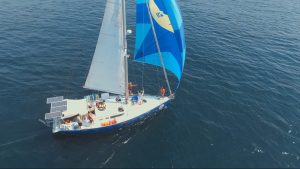
Of course first on the list of contacts would be emergency contacts such as the Coast Guard and other rescue agencies. Do not rely on internet contact information alone, rather make sure you have a list of phone numbers that connect to an actual human. This is important as you do not want your shore support person to have to waste time going through endless bots to get to a human that may or may not be able to help. This pre-research could save valuable time. Try to get a list of Coast Guard stations and their phone numbers that might lay along the expected path of travel. This would be for both US and foreign Coast Guard operations.
For long passages that may end in a foreign country be sure to have emergency information for those locations as well. If at all possible try to get the name and number of a real person within each agency rather than just a general number. Also make sure you have the number of your home countries’ embassy or consulate along with the names of persons to contact there. As you can see this will take some homework to put together but can be invaluable and can save precious time in an emergency.
It is important to also have a list of medical professionals that may be willing to help. If there is a medical emergency aboard it can be very important to be able to contact medical personnel directly. Once again in this day of bots and phone exchanges contacting a doctor directly is almost impossible. If you know of a doctor either your own or a friends, it helps to have a direct number to them. If you’re personal doctor cannot or is unwilling to help try finding a local physician that is a boater. Check with local yacht clubs and marinas to try to find a willing doctor. If you know a local EMT that would be willing to help this could prove helpful if a doctor could not be reached when needed. Additionally EMTs know how to deal with emergency medical issues and injuries. Medical emergencies often need to be handled quickly so being able to get in touch with the right person fast is imperative. Additionally do not forget to have a dentist on the list as well in case of a dental emergency. If there are pets aboard a veterinary doctor could be helpful as well.

If you are using a private communication service such as SPOT or InReach make sure their emergency numbers are up to date and available. Keep in mind these are private services and not connected to a government agency and cannot do anything but forward information to a government SAR (Search and Rescue) operation. This is why it is important to have the government contact numbers first and foremost. You will also want your shore support to have access to online tracking maps for these services as well. In an emergency the first thing anyone is going to want to know is your last position and they will want that in Latitude and Longitude not the link to a web site, make sure your support team knows how to get that from the tracker.
Next list to have at the ready is a list of weather sources. Your contact person does not have to be a weather guru but knowing where to get the right weather information to pass along can be just as important. Often, just knowing what the forecast is will be enough to allow the skipper to make the right decisions. There are also some paid weather services that can be employed as well. If subscribed to any one of these services, make sure your support has their information even if you will be receiving information directly from them.
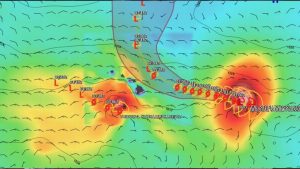
Next try to have a list of those people that may be willing to help and have a specialized knowledge. Someone who is familiar with passage weather would be great, this does not have to be a weather “expert” but maybe just a local sailor who may familiar with the weather conditions along the route you will be taking. There are some professional weather services available and most of these are very good but do charge for their services. If you have the financial resources these are a good option as they will provide routing based of predicted patterns. You may also try and befriend a local TV news or NOAA weather person, they may just think it would be a fun side project to help you.
Other specialties would include boat repair technicians. Often you can solicit help from the marina staff or others that you have worked with while getting ready for your voyage. Do not be afraid to ask if they would be willing to be a contact and help in an emergency. You will be surprised at just how often these folks are more than willing to help and will be flattered that you asked. Should you have a failure at sea these folks can often give you valuable suggestions and advice for repairs. Remember the Apollo 13 crew could not have made it back if not for the earth based technical staff.
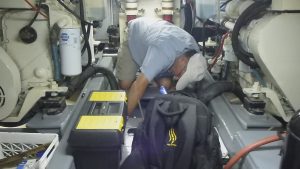
Of course all these contacts are of no help if you do not have a good method of communication between land and the boat. There are really only two ways to contact a vessel offshore these days. The first is satellite communication and the other is by radio. Radio will consist of cell phone, VHF and SSB. Cell phone and VHF are limited to 10 or 20 miles offshore while marine SSB will reach across oceans. Likewise satellite can be worldwide. It is beyond the scope of this article to get into all the communication devices available but whatever you select make sure your support team knows how to get in touch with you and use any communication equipment being used.
A good communication schedule is also important. There should be set times of days scheduled for contact. This could be based on the best time for the captain to be free to talk or could be based on the best times of day for radio communications. For SSB this may be mornings or evenings due to radio propagation. I suggest you have at least one daily contact time. Be sure to have a backup time in case communications fail at the preplanned time. Also set a time interval where if no communication is made emergency services should be contacted.
If you are using a satellite phone or satellite data transmitter make sure your main contact has the ability to add minutes to the account used. I have heard of more than one incident during an emergency when the phone was cut off due to used up prepaid minutes or other problems with the account. Your land based contact should have full control over the account and should have contact info for the provider in case they need to be contacted.
SSB can be a bit trickier unless your main contact is an amateur radio operator. With SSB it may be best to have a contact with a local amateur radio club. Club members generally really like to help with things like an offshore passage and can even provide phone patches to any land phone needed. Most amateur radio clubs are also trained to deal with emergencies should one come up and can often provide relays should contact become difficult. There are several marine radio nets or groups that many sailors check in with on a daily basis. These groups can provide even more assistance if needed so make sure your land contact has contact information for these groups as well.
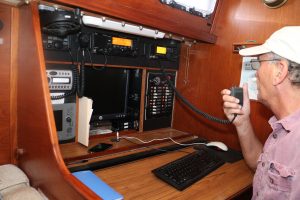
Finally do not forget to have a complete float plan available to your shore support. Should all contact be lost between the boat and land an up to date float plan can help should you be overdue for arrival or communications. A good float plan should include a good description of the vessel along with information about those aboard as well as planned and possible routes to be taken. It should also include a list of all “bail out” ports planned should you need to seek shelter for weather or repairs. This is particularly important should any bail out ports be uninhabited.
You do not necessarily need an expensive shore side support team like the offshore racers have to stay safe at sea. A few friends and family can go a long way with filling this need if they have the information and skills needed. It is important to take the time to teach your shore support what to do and where to find the information they will need to help you. Take the time to line up folks with the right skills who are willing to help ahead of time. Not only will this keep you and your crew safer but it can make your trip more interesting and fun. Being able to share your experience with those left on land is part of the fun as well.
Capt Wayne Canning.
If you found this helpful please return the favor to keep the information (and rum) flowing. Please consider helping out with a bit cash. I am a cheap ass sailor and every little bit helps! Thanks!
If you are thinking of buying a product related to the article please check the Amazon link below. I never refer any product I would not buy or have bought myself.
